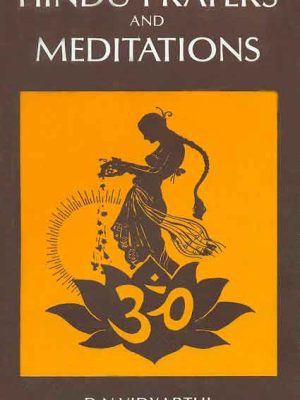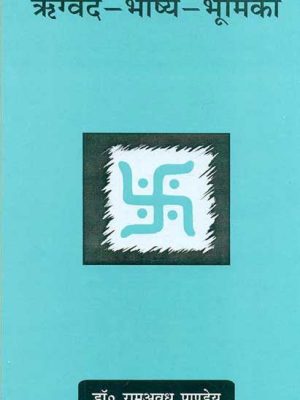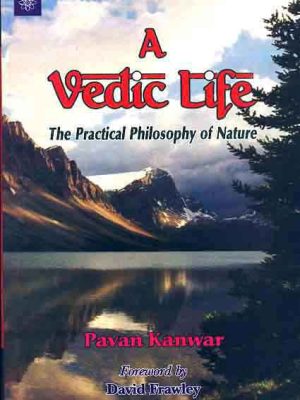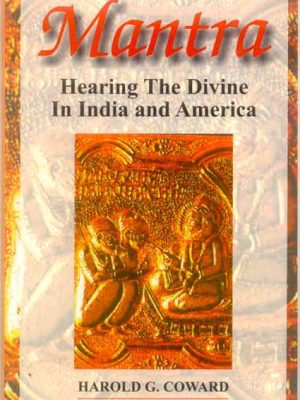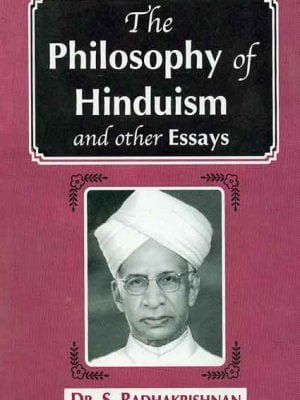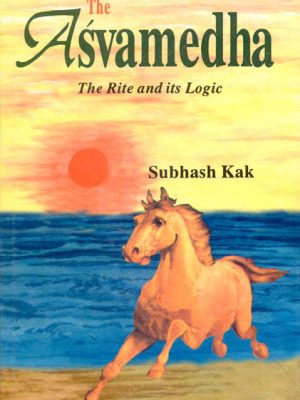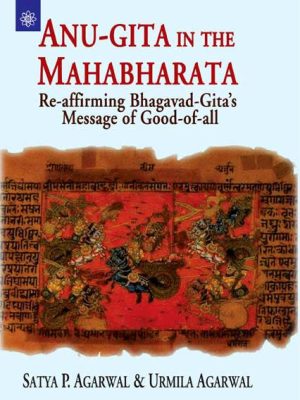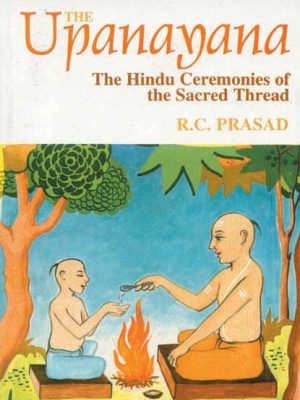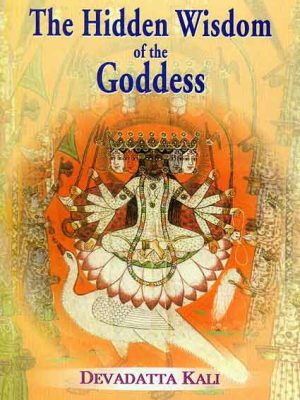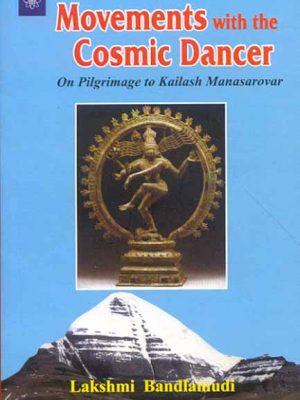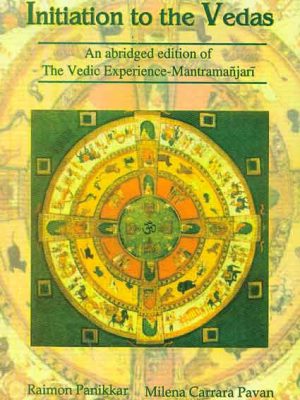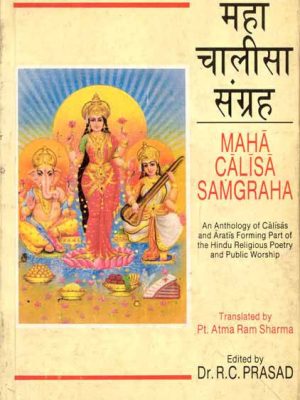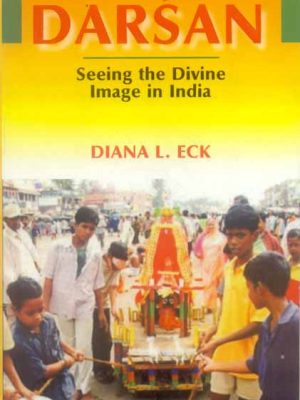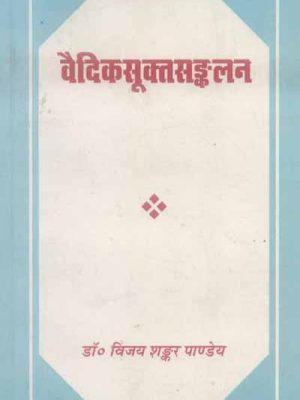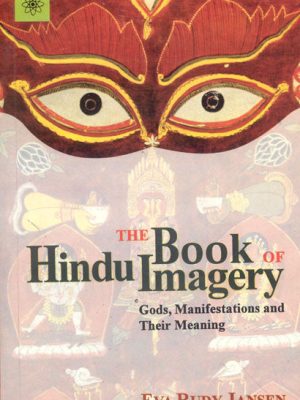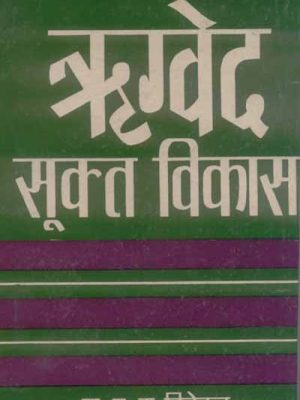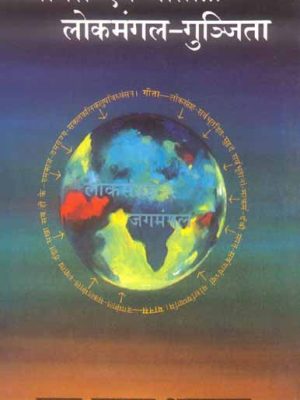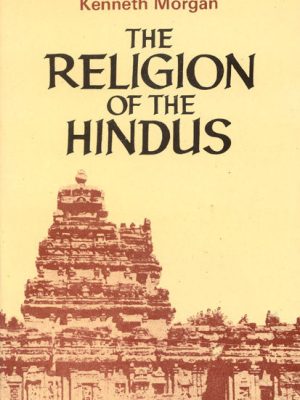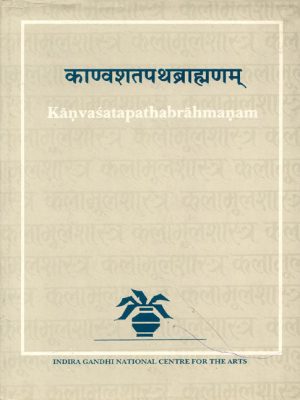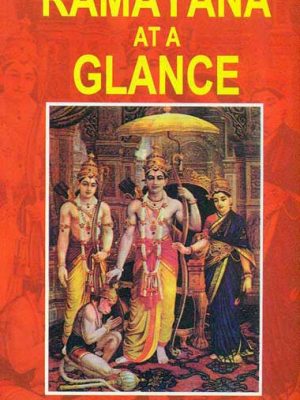Hinduism and Its Sources
-
Hindu Prayers and Meditations
Hindu Prayers and Meditations
Hindus must pray daily morning at sunrise and evening at sunset one must have divine communication with God, and ask Him for Light and Guidance in life. Hindu scriptures abound in prayers. They are of different types and of complex nature, and form part of various rituals and ceremonies. In our daily life, however, we need not be bothered with these complexities. A few simple prayers, will serve our needs beautifully. The only thing we have to constantly keep in mind is the purity of our hearts and sincerity of purpose. We cannot offer prayers precariously and half-heartedly.
Author
D.N. Vidyarthi
₹225.00Hindu Prayers and Meditations
₹225.00 -
Rigveda-Bhashya-Bhumika: Hindi Anuvad Sahit
Rigveda-Bhashya-Bhumika: Hindi Anuvad Sahit
Rigveda-Bhashya-Bhumika: Hindi Anuvad Sahit
Author
Ramavadh Pandey
₹225.00 -
A Vedic Life: The Practical Philosophy of Nature
A Vedic Life: The Practical Philosophy of Nature
In Sanskrit, the word veda refers to knowledge, and the ancient tradition known as the Vedic tradition is linked with India and focuses primarily on knowledge. It is not about any one kind of information, but rather about knowledge in general as a tool for comprehending and experiencing reality. As a result, it is a tradition that does not restrict itself to one one system. Instead, it takes a perspective that is open and inclusive, and it believes that a reasonable approach is very necessary. However, it does not restrict itself to logic alone; rather, it also examines an approach that is focused on inner perception, since this is a vital aspect of both our knowledge and our experience of reality. The book titled “A Vedic Life” is a presentation that outlines some of the most significant aspects of the Vedic method of approaching information. It does this not for any specific religious or sectarian motive, but rather for the sake of knowledge, as indicated above, and as a result, it is anticipated that it will be able to contribute something to a range of opinions. Although the Vedas (books of wisdom) are intimately connected with the Vedic approach to knowledge because they exemplify its open and inclusive approach to information, the Vedic approach to knowledge is not limited to any one individual or book, as was previously noted. This aspect of the Vedic writings is expressed in a phrase from the Rig Veda, one of the core Vedic books, which states that “reality is one, but the knowledgeable call it by numerous names.”
The Vedic tradition is not the only one that has an open attitude toward knowledge; nonetheless, it is perhaps the most in-depth and oldest system of its kind. It is also the best maintained, despite the fact that a significant amount of its knowledge has been lost in modern times. Despite the fact that many of its pioneering philosophers had a completely different perspective, the system of contemporary science obviously clearly strives to the same ends; nevertheless, it does not truly recognise any other kind of thought than that which is founded on reason and sensory evidence. This book will examine the benefits and drawbacks of the methodology that is being used by contemporary science, particularly in light of the Vedic methodology for doing scientific research.
Because Sanskrit being the primary language used throughout the Vedic period, the book makes extensive use of Sanskrit words and phrases throughout its content. Once again, this is not due to any kind of ceremonial purpose; rather, it is due to the fact that the Sanskrit language used in the Vedas has a very well developed vocabulary in relation to psychology and philosophy. In addition, an effort will be made to show that Sanskrit is a natural language for the purpose of acquiring information, and this effort will be documented.
₹225.00 -
Mantra
Mantra
The encounter with the holy in India is a synthesis of three distinct aspects: performance, music, and visual presentation. One of three works that make up a trilogy that also includes Diana Eck’s Darsan: An introduction to the use of sound, or mantra, in the practise of Indian religion, Seeing the Divine in India gives an overview of this aspect of Indian spirituality. The use of mantra, which may take the form of prayers, rituals, and chants, is ingrained in the everyday practise of Indian religion, whether it is carried out at a temple or at home. This book explores the ability of mantra to bring about a shift in one’s state of awareness. It incorporates allusions to Buddhist, Hindu, Sikh, and Muslim as well as Sufi and Sufi traditions as it investigates the use and theory of mantra throughout a number of different religious systems, such as the Patanjali sutras and tantra. This updated version includes additional chapters on the use of holy sound among groups of Hindus and Sikhs who have migrated to North America, as well as on the practise of yoga and mantra in North America by people who are not of Indian descent.
₹245.00Mantra
₹245.00 -
The Philosophy of Hinduism and Other Essays
The Philosophy of Hinduism and Other Essays
In the Philosophy of Hinduism – Dr. S. Radhakrishnan, has explained the central features of faiths of Hinduism, its philosophical and spiritual doctrine, religious experience, ethical character and traditional faiths. Hinduism is a process and not a result, a growing tradition and not a fixed revelation as in other faiths. He has compared the Christanity, Islam and Buddhism in the light of Hinduism and stressed that ultimate aim of these religions is the attaintment of universal self. The analysis of religions is highly intellectual and balanced looking to whole hearted response he received for these lectures in U.K. He has been then aclaimed as another Vivekananda. The articles in the book reflect the mind of this great philosopher.
₹250.00 -
The Asvamedha: The Rite and its Logic
The Asvamedha: The Rite and its Logic
This article explains many specific characteristics of the Vedic sacrificial system by describing the ritual known as “Asvamedha” and the symbolism associated with it. Within the framework of Vedic epistemology, a number of inquiries about the Asvamedha are addressed, along with their respective answers. This rite serves three important purposes: I it presents an equivalence of the naksatra year to the heaven, implying that it is a rite that celebrates the rebirth of the Sun; (ii) it is symbolic of the conquest of Time by the king, in whose name the rite is performed; and (iii) it is a celebration of social harmony that has been achieved by the transcendence of the fundamental conflicts that exist between various sources of The comprehension of numerous of its particulars is aided by the use of numerical concepts taken from another Vedic ritual known as the Agnicayana.
Author
Subhash Kak
₹250.00 -
Anu-Gita in the Mahabharata: Re-affirming Bhagavad-Gita’s Message of Good-of-all
Anu-Gita in the Mahabharata: Re-affirming Bhagavad-Gita’s Message of Good-of-all
The purpose of writing this book is to make available to English-knowing readers, an easyto-read version of Anu-Gita. Although Anu-Gita is an important part of the Maha-bharata, it has so far not been presented in a simple form to common people, with the result that most people do not even
know that such a book exists. The prefix ‘Anu’ denotes ‘after’, so Anu-Gita literally means ‘Gita occuring after’. In the Mahabharata, Bhagavat-Gita occurs in Parva No. 14. (In all, there are 18 Parvas in the Mahabharata).
It is well known that the Gita was taught by Lord Krishna to Arjuna on the battle field of
Kuruksetra. So it was a time of crisis at the time of Anu-Gita. In fact, the Mahabharata war was over and peace was established in the Kingdom, under the rule of Yudhisthira (whom every one including Arjuna supported).
But the format of Anu-Gita is different from that of the Gita. In the Gita, there was dialogue between Krishna and Arjuna. On the other hand, in Anu-Gita, Krishna makes use of three ancient
dialogues. Because of this, Anu-Gita has a lot of repetitions, which have made it longer than the
Gita. For example, Anu-Gita has thirty-six chapters (compared to eighteen chapters in the Gita), and 1040 shlokas (compared to 700 shlokas in the Gita). In order to present Anu-Gita in an easy-to-read version, the authors have omitted the repetitions, and have selected 400 shlokas. But they have retained all the main teachings of Anu-Gita.
Most people (even in India) have not heard the name of Anu-Gita. This is so because, although Anu-Gita is an important part of the Mahabharata, no scholarly study of it, in a simple language, has so far been published. This gap will be filled by this pioneering book, which explains under what circumstances was the Gita taught by Lord Krishna to Arjuna, for the second time. This book is divided into two parts. Part I presents the Sanskrit-shlokas of Anu-Gita, along with their translation in simple English. Part II explains the main points of similarity, as well as dissimilarity, between Gita and Anu-Gita.
Author
Satya P. Agarwal
₹250.00 -
The Upanayana: The Hindu Ceremonies of the Sacred Thread
The Upanayana: The Hindu Ceremonies of the Sacred Thread
It appears from ManuÍs institutes that they are meant as much for the householder in the
second order of life_garhasthya_as for the student. The laws for the brahmanas are severer and they are expected to subject themselves to harder physical and mental disciplines, forsaking all attachment of their organs to sensual pleasures. A brahmana student must keep them under complete
control and bear in mind that desire is never extinguished by the enjoyment of desired objects; it only grows stronger like a fire fed with clarified butter.
But all this appears to have vanished. It is unfortunate that many brahmanas, starkly ignorant
of the Vedic rcas and scriptural teachings, are often called upon to perform the ceremonies. There is substance in their contention that since the times have changed, the ceremonial laws too must be thoroughly revised and modified to bring them in conformity with the present-day ethos. They also argue that, as the mantras are in Sanskrit, very few people are able to chant them with complete understanding of their inherent meaning and importance. It is to meet their demand for a simple text with explanatory instructions that this book has been written. Its readers can be scholarly priests or non-scholarly householders or both. To some this may sound a profanation of the ceremonial laws, but the intention is pious and therefore this attempt to democratize and
expound the esoteric is forgivable.
Upanayana is one of the sixteen samskaras or purificatory rites in which a boy is invested with the sacred thread and thus endowedwith second or spiritual birth and qualified to learn the Veda by heart. In this ceremony the boy goes to an Acarya well-versed in the Vedas with a view to be initiated into Vedic studies or a Guru draws a boy towards himself and initiates him into one of the three twice-born classes. From the day the initiation ceremony takes place the young celibate commits himself to a life of austerity and abstinence; he chooses to lead a life rigorously disciplined by vows and disciplinary rules.
₹275.00 -
The Hidden Wisdom of the Goddess
The Hidden Wisdom of the Goddess
The Hidden Wisdom of the Goddess is an extended meditation in the form of a novel that follows the Devimahatmya’s basic outline, condensed here and expanded there in freely imaginative ways. In the Devimahatmya the seer Medhas teaches through the language of myth, which cries out for interpretation, because little is spelled out. The Hidden Wisdom to the Goddess communicates the hidden wisdom of the holy man’s teachings simply, directly, and eloquently.
Most of the book consists of newly invented scenes, incidents, and conversations between Medhas and his two disciples, the king Suratha and the merchant Samadhi. As the book progresses, the main characters become fleshed out and take on a life of their own. All the while, the writing probes ever deeper into the mysterious of human existence.
₹295.00The Hidden Wisdom of the Goddess
₹295.00 -
Movements with the Cosmic Dancer: On Pilgrimage to Kailash Manasarovar
Movements with the Cosmic Dancer: On Pilgrimage to Kailash Manasarovar
Lakshmi Bandlamudi’s description of her journey to Kailash and Manasarover, representing as they do Purusha and Prakriti, the masculine and the feminine nature of existence, is deeply moving because she connects it to her own inner spiritual quest. Replete with mythical stories regarding Shiva and Parvati, and written with a special emphasis on the feminine, this book is a moving testament of a living faith which has persisted for thousands of years.
Lakshmi Bandlamudi’s script is a sublimely cosmic dance in itself hinting at a difficult life and a less than easy journey; she nonetheless describes her journey to Kailash the home of Shiva, as a transcendental pilgrimage of the soul. The story Tibetan territory she must traverse becomes almost irrelevant in her soul’s searching for answers to questions, which are both personal and universal.
Author
Lakshmi Bandlamudi
₹295.00 -
Initiation to the Vedas: An abridged edition of The Vedic Experience-Mantramanjari
Initiation to the Vedas: An abridged edition of The Vedic Experience-Mantramanjari
The hymns we find here are prayers. To be able to invocate, that is, to call upon something greater than ourselves and so break our own bounderies is the beginning of wisdom, the source of hope and the condition of joy.
About the Author(s)
RAIMON PANIKKAR was ordained as a Catholic priest and is Professor Emeritus of Religious Studies at the University of California, Santa Barbara. At present he lives in the mountains of Catalunya trying to learn the wisdom of life.
₹295.00 -
Maha Calisa Samgraha: An Anthology of Calisas and Aratis forming part of the Hindu
Maha Calisa Samgraha: An Anthology of Calisas and Aratis forming part of the Hindu
A Calisa is a 40-verse song dedicated to the many manifestations of Visnu and other powerful deities, such as the goddesses. It’s obvious that these are songs of devotion. introduction and notes to a significant source of reference on Hinduism. Maha Calisa Samgraha: An Anthology of Calisas and Aratis forming part of the Hindu
Author
₹295.00 -
Darsan
Darsan
The experience of the divine in India merges the three components of sight, performance, and sound. This book is about the power and importance of “seeing” in the Hindu religious tradition. In the Hindu view, not only must the gods keep their eyes open, but so must we, in order to make contact with them, to reap their blessings, and to know their secrets. When Hindus go to temple, their eyes meet the powerful, eternal gaze of the eyes of God. It is called Darsan, “Seeing” the divine image, and it is the single most common and significant element of Hindu worship. This book explores what darsan means. This is also a book about the divine image in the Hindu tradition. What do Hindus see in the images of the gods? What is meant by these multi-armed gods, with their various weapons, emblems, and animals? How are these images made and consecreted? How are they treated in a ritual context? In exploring the nature of the divine image, this book not only considers the images of the gods, but also the Hindu temple and the Hindu place of pilgrimage.
Author
DIANA L. ECK
₹295.00Darsan
₹295.00 -
-
The Book of Hindu Imagery: Gods and Their Symbols
The Book of Hindu Imagery: Gods and Their Symbols
Hinduism is more than a religion; it is a way of ife that has developed over approximately 5 milennia. Its rich and multicultured history, which has no equivalent among the great religions of the world, has made the structure of its mythical and philosophical principles into a highly
differentiated maze, of which total knowledge is a practical impossibility.
This volume cannot offer a complete survey of the meaning of Hinduism, but Eva Rudy Jansen does provide an extensive compilation of important deities and their divine manifestations, so that modern students can understand the significance of the Hindu pantheon.
To facilitate easy recognition, a survey of ritual gestures, postures, attires and attributes as well as an index are included. Over 100 illustrations and several photographs make this book an important
reference, both to the student of Hindu art and the interested amateur.
About the Author(s)
EVA RUDY JANSEN
₹295.00 -
Rigvedasukta Vikas
Rigvedasukta Vikas
Rigvedasukta Vikas it focuses emphasis on the social importance of this well-known Hindu text, the current study offers a fresh viewpoint on the Bhagavad-Gita, which is backed by research that was carried out in the past. The first section of this book offers a profound investigation of the ways in which reinterpretations of the Gita played a key part in the social history of India throughout the nineteenth and twentieth centuries. The illustrative material is comprised of five case studies pertaining to the following individuals: Raja Rammohun Roy, Swami Vivekananda, Bal Gangadhar Tilak, Aurobindo Ghose, and Mahatma Gandhi. In Part II, an explanation is given of how the social applications of the Gita are related with its most essential message for the present day, which is known as Loksamgraha and translates to “the good of society.” A contemporary meaning of the lokasamgraha-approach is the inculcation of societal ideals and a feeling of social duty in each person. Lokasamgraha is a Sanskrit phrase that appears in the Gita but not in the Upanishads.
About
₹295.00Rigvedasukta Vikas
₹295.00 -
Manas evam Gita: Lokmangal-Gunjita
Manas evam Gita***Lokmangal-Gunjita
Manas evam Gita: Lokmangal-Gunjita
Author
Dr. Satya P. Agarwal
About the Author(s)
Dr. Satya P. Agarwal is a Social Scientist. His academic honours include five gold medals and numerous merit scholarships and research fellowships at various universities. The Governor of the State of Maryland conferred upon him “The Governor’s Citation”, in recognition of his pioneering books as also his contribution to social service. He is author of several books besides the present one which are widely acclaimed and appreciated by the discerning readers. Other honours conferred on him include: (i) Kunti Goyal International Award, (ii) Special Award of Manas Sangam and (iii) International Tulasi Award.
₹295.00 -
The Religion of the Hindus
The Religion of the Hindus
The Religion of the Hindus concepts of samsara, which refer to the never-ending cycle of life, death, and rebirth, and karma are central to the Hindu worldview (the universal law of cause and effect). “Atman,” which translates to “soul,” is one of the most fundamental concepts in Hinduism. According to this school of thought, all living things possess a soul, and together, these souls make up the one, ultimate soul. The term “Hindu” is really an exonym, and despite the fact that Hinduism is considered to be the oldest religion in the world, many Hindu adherents refer to their faith as “Santana Dharma.” A Hindu classic reprinted. Essays about Hinduism and ritual by ardent Hindus. An intro.
Authored by
Kenneth W. Morgan
About the Author(s)
KENNETH W. MORGAN lived in Ramakrishna Mission Ashrams in India. He served
as Director of Chapel House and of the Found for the study of World
Religions. He became Professor of Religion, Emeritus, at Colgate University
in 1974.
₹295.00The Religion of the Hindus
₹295.00 -
-
Ramayana At A Glance
Ramayana At A Glance
The world is the stage on which the Lord played the part of Rama as the ideal son, brother, husband, step-son, and king. The story of Rama and Sita is verily the story of humanity. Sita, Rama’s devoted consort, enacted the role of the dutiful, chaste wife who cared for nothing but her beloved Rama. Lakshmana was the perfect brother, and Bharata and Shatrughna were exemplary in their devotion to their step-brother, Rama.
The next main character, Hanuman, is the embodiment of a surrendered devotee the pinnacle of Bhakti Yoga. The ten-headed Ravana, who plays the antagonistic role, symbolizes our ten senses (5 senses of knowledge and 5 senses of action). During the war, Rama beheads Ravana, which is characteristic of a yogi conquering the senses.
The characters in the Ramayana relate to our own human drama. The Ramayana teaches us a way of life. It shows how to have pure love among family members and toward society and gives us a
method to control the ten senses and the mind for inner peace and spiritual bliss.
Singing the LordÍs name on the gross plane can bring us to the transcendental level where sound manifests as pure energy. The name and form disintegrate in Pure Consciousness and ultimate peace is experienced. Repetition of the Lord’s name in the form of japa or kirtan will bring the transcendental, blissful experience attained by the great devotees and saints like Bhakta Mira
Bai, Tukaram, and in the present time, Sri Sant Keshavadas, Santji has followed the tradition of our great saints and devotees of the past and has now brought the story of the Ramayana for 20th century man.
₹345.00Ramayana At A Glance
₹345.00

